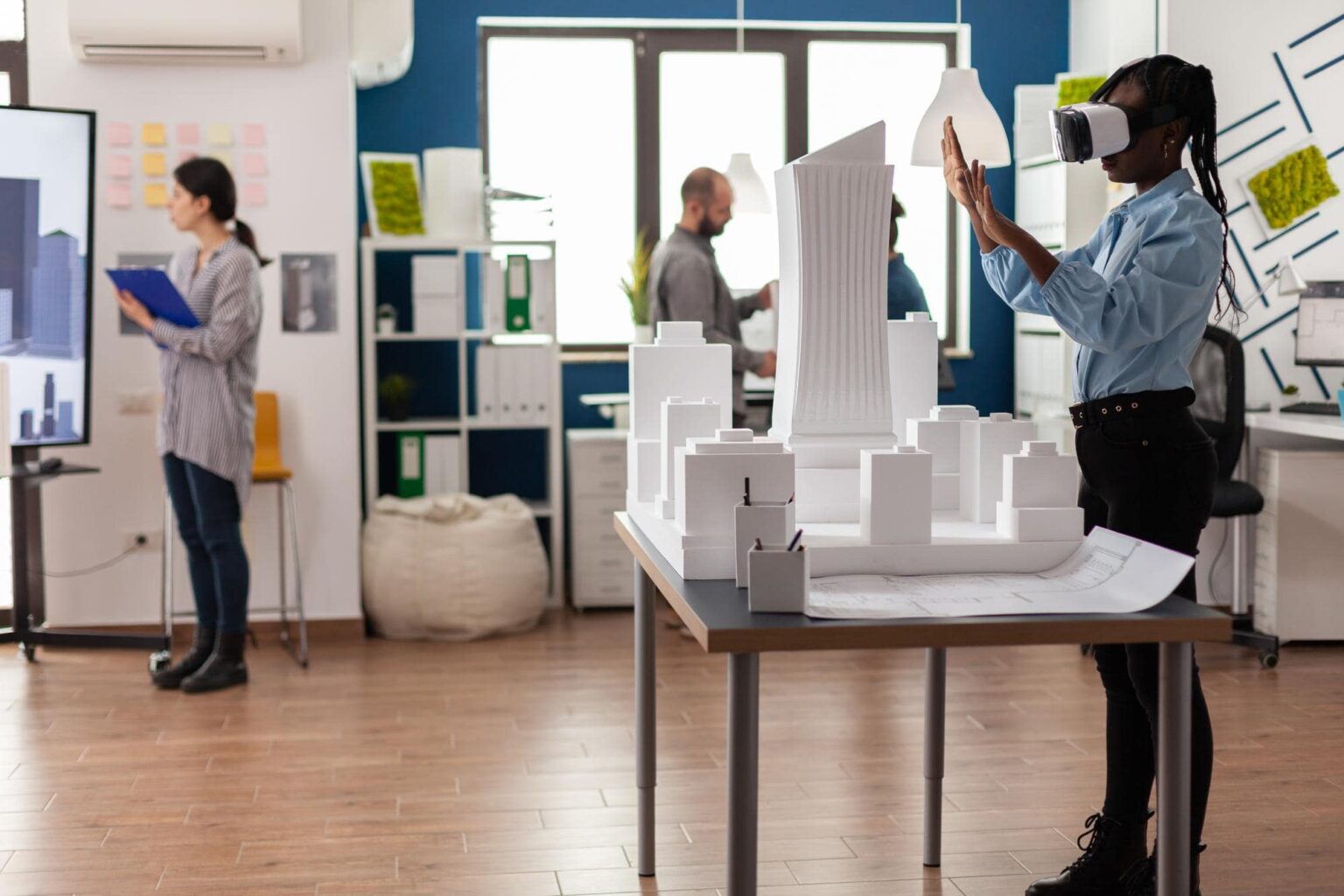AR (Augmented Reality) and VR (Virtual Reality) technologies have revolutionized the field of architecture and design by providing powerful tools for visualizing spaces and enhancing creativity. These immersive technologies allow architects, designers, and clients to experience and interact with designs in virtual environments, bringing concepts to life and facilitating informed decision-making. Here’s how AR/VR is utilized in architecture and design:
- Immersive Design Reviews: AR/VR enables architects and designers to create virtual representations of their projects, allowing clients and stakeholders to explore and experience designs before they are built. By immersing themselves in virtual environments, users can navigate through spaces, visualize materials, lighting, and spatial relationships, and gain a better understanding of the design intent.
- Concept Exploration and Iteration: AR/VR tools provide a platform for architects and designers to experiment with different design concepts and iterations rapidly. They can create virtual models, manipulate forms, textures, and colors, and assess the impact of design decisions in real-time. This iterative design process enhances creativity and allows for better-informed design choices.
- Spatial Planning and Layout: AR/VR technologies assist in spatial planning and layout design. Architects and interior designers can create virtual representations of buildings or interior spaces, allowing them to test different configurations, furniture arrangements, and traffic flow. This helps optimize space utilization, identify potential design flaws, and ensure functionality before construction begins.
- Client Engagement and Communication: AR/VR enhances communication between architects/designers and clients. Instead of relying solely on 2D drawings or renderings, clients can experience designs in an immersive manner. They can provide feedback, make informed decisions, and actively participate in the design process. AR/VR facilitates a shared understanding of design intent, reducing misunderstandings and improving client satisfaction.
- Realistic Material and Lighting Simulation: AR/VR technologies simulate realistic materials, textures, and lighting conditions, enabling architects and designers to accurately visualize the appearance of a space. They can experiment with different materials, finishes, and lighting setups, assessing their impact on aesthetics, ambiance, and functionality. This realistic simulation aids in material selection and achieving desired visual effects.
- Virtual Mock-ups and Prototyping: AR/VR eliminates the need for physical mock-ups or prototypes. Designers can create virtual models that accurately represent the intended design. This saves time and costs associated with building physical prototypes while allowing for more efficient design validation and iteration.
- Historic Preservation and Restoration: AR/VR can be used in historic preservation and restoration projects. By overlaying virtual reconstructions onto existing structures, architects and historians can visualize how a building might have looked in the past. This technology aids in research, documentation, and the preservation of cultural heritage.
- Collaborative Design and Remote Collaboration: AR/VR facilitates collaborative design processes, enabling architects and designers to work together in virtual environments. Multiple team members, regardless of their physical location, can simultaneously view and interact with the same virtual models. This enhances communication, teamwork, and design coordination.
- Marketing and Visualization: AR/VR technologies are powerful marketing tools for architecture and design firms. They can create immersive experiences for clients and stakeholders, showcasing projects in a visually stunning and interactive manner. Prospective buyers or investors can virtually tour unbuilt properties, experiencing the space and features before making decisions.
AR/VR technologies have transformed the architecture and design industry, empowering professionals to visualize, create, and communicate design concepts in new and immersive ways. By providing realistic representations of spaces, facilitating collaboration, and enhancing creativity, AR/VR is driving innovation and revolutionizing the design process.



